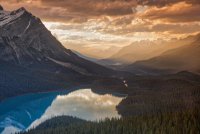OK. Firstly I'm connected (not an employee) to Lee Filters so let me answer some of your questions.
As long at the filters have been stored properly then they will be fine. A simple test would be to set-up a white background and check via the meter if NDs are altering the stops i.e. is a .3 ND / ND grad altering the exposure by one stop, two for .6 and three for .9 etc. This cannot be done for Big Stoppers /Super Stopper your need to carry out a long exposure so download the Lee Filters App. for the little stopper / big stopper / super stopper, these filters are glass and the dyes used will not alter.
Check for deep scratches (slight surface marks will not generally photograph or create flares as the plane they sit in is too far out of focus). The resin filters are made from the same resin used to make prescription reading glasses, and are of a type that resists yellowing from UV exposure just like reading glasses.
Lastly make sure they are flat and have not been exposed to long term higher than normal temperatures which could create a bow in the resin.
Other than that happy shooting.
Thanks for the reply. Sorry I missed this post; I didn't notice the response! I'm pretty sure the filters are genuine, and they seem to be working perfectly fine. There's no scratches (other than the edges where the slide into the holders), and there's no warping. I bought my Big and Super Stoppers directly from B&H, so I know they'll be genuine. The only filters left that I really want are the hard grad set. Thank you for your time and help!
I bought the filters and they work perfectly. I've taken some great shots with them. One concern I initially had when purchasing them was that while "Lee" was written on them in their signature etching, they did not have what type of gradation they are indicated on them. For example, it doesn't say "hard", "Medium" or "soft". I assume it's because when this set was manufactured there were only "soft" and "hard", as the medium grad sets, from my understanding, are a relatively recent development.
Anyways, the filters are in excellent shape and have been doing their job phenomenally well.
Here's a shot I took with a .6 grad soft grad, .6 coral, and Lee landscape circular polarizer of Peyto Lake at sunset.

